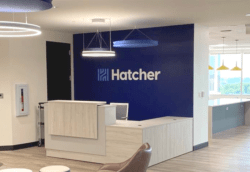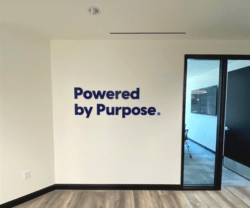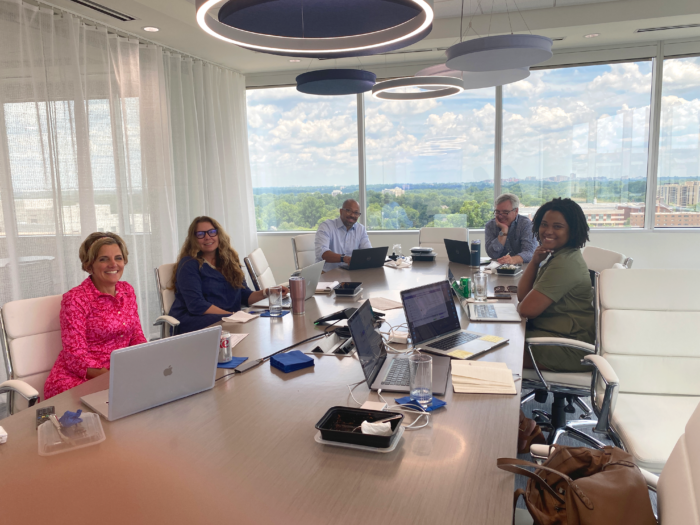
Hatcher Offers a New Suite of Options for Post-Pandemic Success
By Dee Kuhn, Senior Editor
In his State of the Union address, President Biden remarked, “It’s time for Americans to get back to work and fill our great downtowns again,” but the current temperature of the workforce may say otherwise. In today’s post-pandemic reality, Americans, as well as employees globally, remain hesitant about making the shift to a full-time, in-office work model. Citing long commutes amid increasing gas prices, as well as frequent distractions and lingering concerns about COVID, many employees believe their morale and productivity are best maintained by working from home.

Since January, scores of companies have been eager to get employees back into the fold with Return to Office (RTO) plans that include perks and incentives, new safety protocols, changes in workflows, and dedicated spaces for health and wellness. One of the biggest reasons employers cite for wanting their teams back in the office is because they miss seeing their people in person. It’s been more than two years since the World Health Organization (WHO) declared the coronavirus a pandemic (March 11, 2020). Since then, employer sentiment has shifted with 92% of employers reporting that employee experience is a priority, from 52% prior to the pandemic. This shift in priority reflects employer views that employee experience drives engagement (81%); employee well-being (80%); productivity (79%); and business performance (78%).
Whether employers are pushing a transition back to the office, meeting employees halfway with hybrid options, or allowing personal at-home productivity with remote work, appreciation is an important part of the employee experience. Firms like Hatcher are realizing that great work doesn’t always take place within brick-and-mortar settings.
Through a hybrid model, in-office attendance is not mandatory and flexible working practices that prioritize and balance health, wellness, well-being, and productivity are encouraged. Even amid the recent move to our new Bethesda headquarters, Hatcher has implemented a hoteling system through a smart space booking tool, much like Expedia and Trivago, giving employees the option to reserve an office space or desk if they have the need or want to work in person. Hatcher’s hybrid model follows those of major companies such as Wells Fargo, Deloitte, and Earnest & Young (EY), who have shifted to an office hoteling system.

Everyone has their own expectations of what returning to work means, but today’s workspace needs to encourage a sense of safety and belonging for employees. It also needs to represent interaction, collaboration, positivity, and socialization. This is why we’ve thoughtfully designed every square inch of our new space to allow flexibility, creativity, and camaraderie among employees. It has ample room for collaboration within safe distances, multiple lounge areas, designated work spaces, rooms for group huddles and large meetings, and private spaces for personal needs and reflection. Best of all, the new commercial kitchen is purposefully stacked with healthy (and some not-so-healthy) snacks, a multibeverage brewing system, and a sparkling and flavored water dispenser, which provides the comforts of home for employees who come into the office.
At a time when few companies were prepared to deliver a positive experience in such unsettled times, Hatcher made it a priority to retain a culture that valued both individual contributions and teamwork. It also made every effort to continue to support its employees with a work model that considers all circumstances and allows employees to continue to engage wherever and however works best for them — all while staying aligned with the firm’s core values.
If your employer is asking you to return in person, and you’re expecting to switch to autopilot mode upon transitioning back, you may instead face a new reality where you’ll find yourself somewhat lost in the familiar. This is normal as many employees find their former workspaces unrecognizable due to new space configurations and restructuring or, in Hatcher’s case, a brand-spanking new space.

Additionally, the thought or task of returning to work may feel overwhelming as a new routine has settled in since the start of the pandemic. Whether it’s your morning coffee and laptop in the dining room or sharing institutional knowledge with colleagues in the office kitchen, our brains are circuited to undertake routine tasks with minimal mental effort. That’s why for some post-pandemic employees, the transition to remote work appears easier than the transition to returning to the office and, for others, it’s about spending time with colleagues. Those preferring to transition back into the in-person office realize there’s energy within an office environment that you just can’t replicate at home. When a group comes together to brainstorm, gestures of triumph or affirmation like two-thumbs-up, fist-pumping, and back-slapping don’t have the same effect on Zoom as they do in person.
What has become clear post-pandemic is that many employers continue to embrace alternative work models, either hybrid or remote, recognizing that flexibility goes a long way in maintaining employee satisfaction and retention. And if the pandemic taught us anything, alternative work models have become the norm and employers are making concerted efforts to reimagine the workplace to help their colleagues and business thrive.